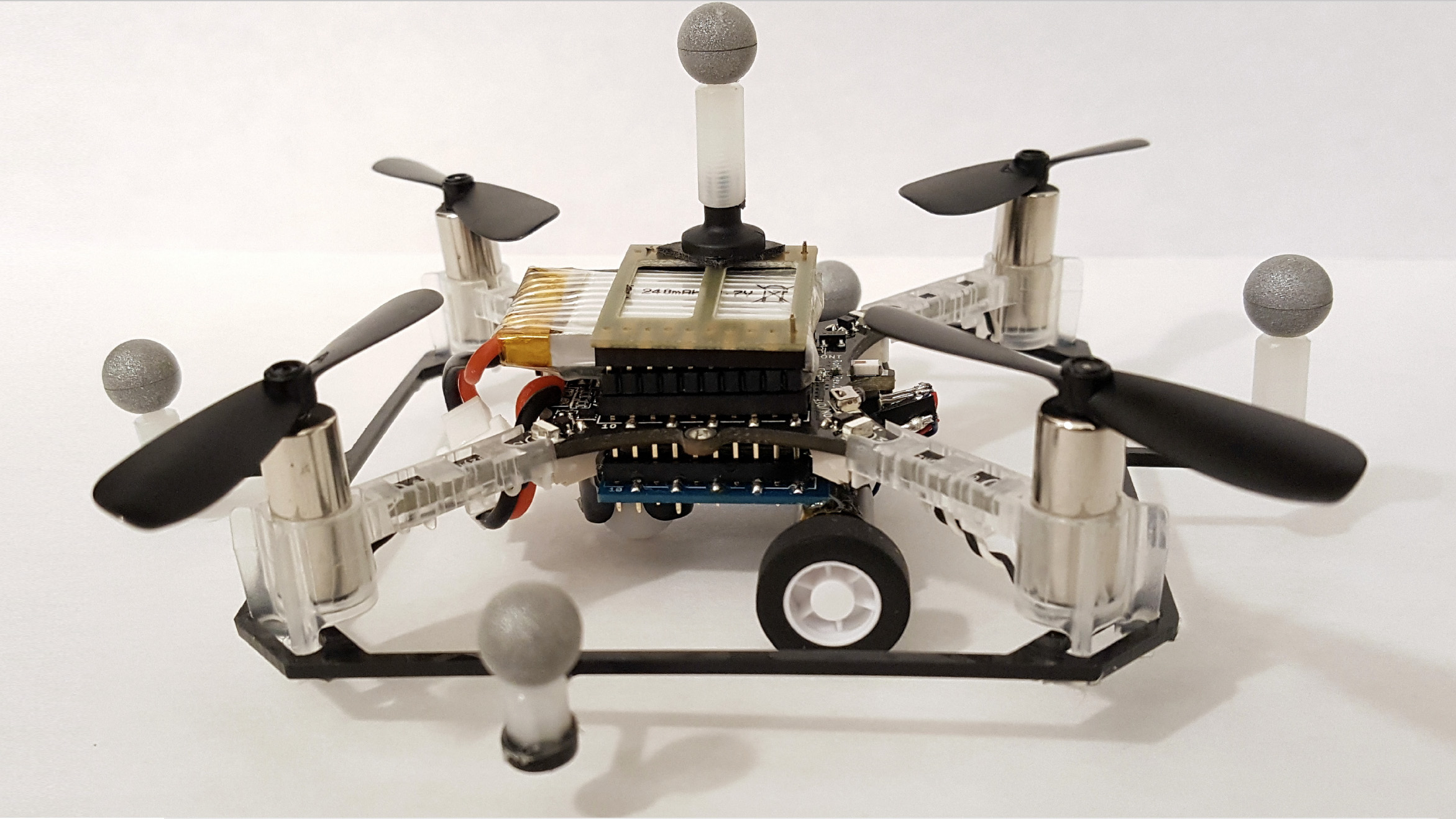Not content with ruling the skies, these flying drones can also drive
Vroom vroom

Almost every flying creature is able to walk. From butterflies, to birds, to bats, to bees. But most flying drones can't – once they land, they have to take off again if they want to get anywhere.
So engineers at MIT have solved this problem by equipping a system of quadcopters that can both fly and drive. It's an approach, they say, that could represent one path towards flying cars.
A team of researchers from MIT's Computer Science and Artificial Intelligence Laboratory (CSAIL) have published a paper that describes a system of eight quadcopters that can operate within a tiny city, complete with parking spaces, no-fly zones and landing pads.
“The ability to both fly and drive is useful in environments with a lot of barriers, since you can fly over ground obstacles and drive under overhead obstacles,” said PhD student Brandon Araki, lead author on the paper.
Gains in efficiency
Adding wheels to the drone reduced its battery life a little due to the weight of the components, by about 14%. But the team says the gains in efficiency from driving more than make up for this loss of efficiency in flying.
“Normal drones can't maneuver on the ground at all," said Araki. "A drone with wheels is much more mobile while having only a slight reduction in flying time.”
While testing the drones, the team built a simulated city – using fabric for roads and cardboard boxes for buildings. They tested their eight bots at the same time, giving each a start point and an end point to reach without colliding with another vehicle.
Get daily insight, inspiration and deals in your inbox
Sign up for breaking news, reviews, opinion, top tech deals, and more.
CSAIL Director Daniela Rus believes the research could lead to more practical applications: “As we begin to develop planning and control algorithms for flying cars, we are encouraged by the possibility of creating robots with these capabilities at small scale,” she said.
“While there are obviously still big challenges to scaling up to vehicles that could actually transport humans, we are inspired by the potential of a future in which flying cars could offer us fast, traffic-free transportation.”
